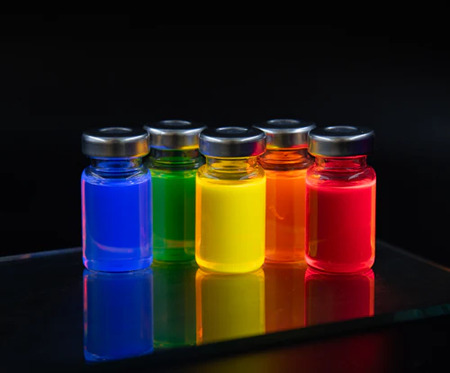In recent years, nanotechnology has transformed multiple fields, from medicine and electronics to energy and environmental science. At the heart of this technological revolution are nanoparticles—tiny particles with dimensions measured in nanometers (one billionth of a meter). Their unique physical and chemical properties have made them highly desirable for both research and industrial applications.
However, acquiring high-quality nanoparticles is not as simple as placing an online order. Whether you’re a researcher running lab experiments or a manufacturer using them in production, the Nanoparticles Purchase process involves critical considerations. These range from particle size and purity to supplier credibility and regulatory compliance.
This guide walks you through everything you need to know before making a Nanoparticles Purchase, so you can ensure quality, reliability, and safety in your applications.
Understanding Your Needs
Before you begin your Nanoparticles Purchase, it’s essential to clearly define your purpose. Different applications require different types of nanoparticles, including:
-
Metal nanoparticles (e.g., gold, silver, platinum) for biomedical and catalytic uses
-
Metal oxide nanoparticles (e.g., titanium dioxide, zinc oxide) for sunscreens, coatings, and photocatalysis
-
Carbon-based nanoparticles (e.g., carbon nanotubes, graphene) for electronics and materials science
-
Polymeric nanoparticles for drug delivery and coatings
Ask yourself:
-
What is the primary function the nanoparticle needs to fulfill?
-
Does it need to be functionalized (e.g., with carboxyl, amine, or PEG groups)?
-
What is the acceptable size range, dispersion medium, and storage condition?
Clearly identifying these requirements will narrow down the options and guide your Nanoparticles Purchase toward materials that are suited for your specific project.
Key Factors to Consider During Nanoparticles Purchase
Once your needs are defined, the next step is to evaluate the nanoparticles themselves and the vendors offering them. Here are the most important criteria:
1. Particle Size and Distribution
Size impacts the surface area, reactivity, and functionality of nanoparticles. Ensure the supplier provides detailed specifications, including average size and size distribution (often through DLS or TEM analysis).
2. Purity and Composition
Impurities can significantly impact research outcomes or product performance. Reputable suppliers should provide a certificate of analysis (CoA) outlining chemical purity, elemental composition, and any surface coatings.
3. Surface Functionalization
For many applications—especially in biology and materials science—the surface of the nanoparticle needs to be functionalized for better dispersion or targeted interaction. For instance, carboxyl or amine groups might be required for binding with biomolecules or polymers.
4. Dispersion and Stability
Nanoparticles can be delivered as dry powders or suspensions. Make sure the delivery format suits your experimental setup. For suspensions, check the solvent system and ensure the particles remain well-dispersed over time.
5. Quantity and Pricing
Nanoparticles can range from a few dollars per gram to several hundred, depending on the type and quality. Consider whether you need research-grade or industrial-scale quantities, as bulk pricing may be available for larger orders.
6. Regulatory Compliance
If you’re using nanoparticles in commercial products, verify whether they meet local and international safety standards, such as REACH (Europe), FDA (USA), or RoHS (electronics).
Making an informed Nanoparticles Purchase not only ensures success in your current project but also saves costs and time in the long run.
Evaluating Nanoparticle Suppliers
Not all suppliers are created equal. Here’s how to vet potential sources during your Nanoparticles Purchase process:
-
Reputation and Reviews: Look for peer recommendations, online reviews, and academic citations.
-
Technical Support: A good supplier should offer technical support for product use and troubleshooting.
-
Documentation: Ensure availability of CoAs, safety data sheets (SDS), and product datasheets.
-
Shipping and Handling: Nanoparticles may be sensitive to temperature, moisture, or light. Choose suppliers that ship with proper packaging and provide tracking.
If you’re working with highly specialized or functionalized materials, consider custom synthesis services. Some suppliers offer tailored nanoparticle synthesis to match exact specifications, which is particularly useful for cutting-edge research.
Common Challenges in Nanoparticles Purchase
Even experienced researchers and industrial buyers can encounter difficulties in the procurement process. Here are a few challenges and how to overcome them:
-
Batch Inconsistency: Always request a sample or small batch first to verify consistency before committing to a large order.
-
Short Shelf Life: Some nanoparticles degrade quickly. Confirm storage requirements and expiration dates.
-
High Cost: If cost is a constraint, consider pooling resources with other departments or labs, or purchasing from local distributors to reduce shipping costs.
Remember, a successful Nanoparticles Purchase isn’t just about getting the material—it’s about getting the right material from the right source with proper support and documentation.
Conclusion
The Nanoparticles Purchase process is a critical step that can significantly impact the success of your scientific research or industrial application. By clearly defining your needs, thoroughly evaluating suppliers, and verifying product quality and compatibility, you can avoid common pitfalls and ensure you’re getting exactly what your project requires.
Whether you’re conducting cancer research, building sensors, or creating next-generation materials, the right nanoparticles make all the difference. With an informed strategy and careful selection process, you can confidently make a Nanoparticles Purchase that delivers reliable results and adds value to your work.









